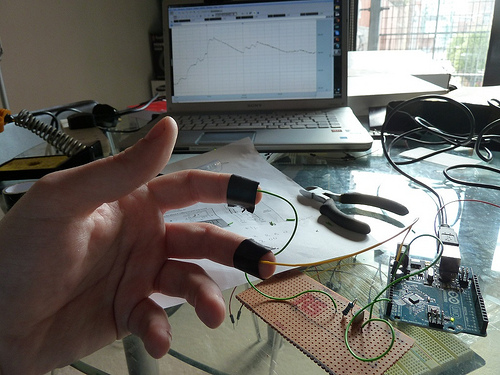Ever since my undergrad supervisor got me interested in designing biofeedback games I’ve been hooked. When you research biofeedback games you see a lot of cool and interesting things from your fellow researchers but getting to experience those systems is very difficult. For example, the adaptive Tetris game we developed at Liverpool John Moores University uses a Biosemi EEG which is prohibitively expensive. If anyone else was going to experience the game they’d either have to already have the setup we used to run the game or need to rebuild the EEG processing pipeline to make it work.
Continue reading “Bit of a Ramble on Experiencing Biofeedback Games & A Video on Consumer Devices”
